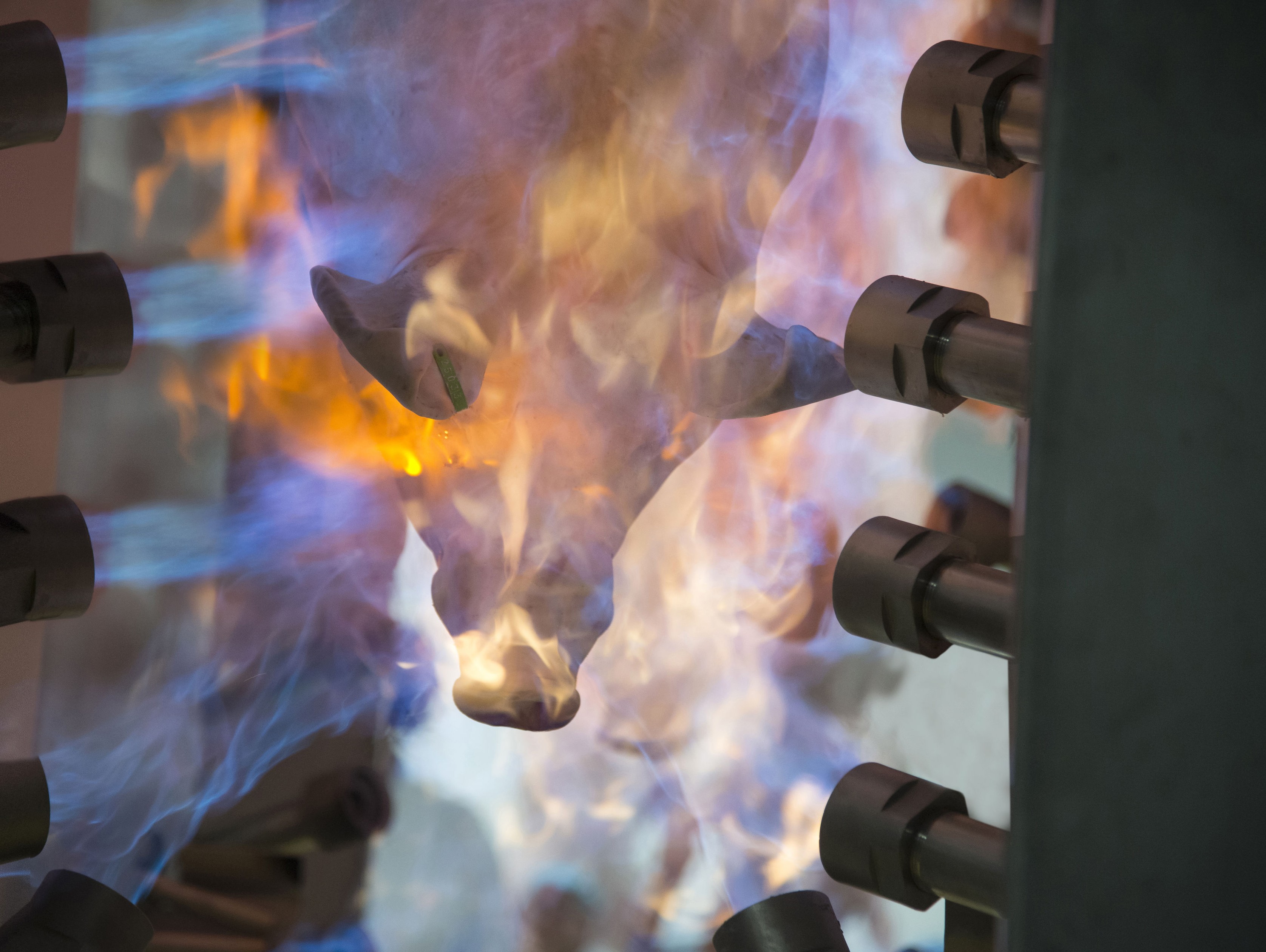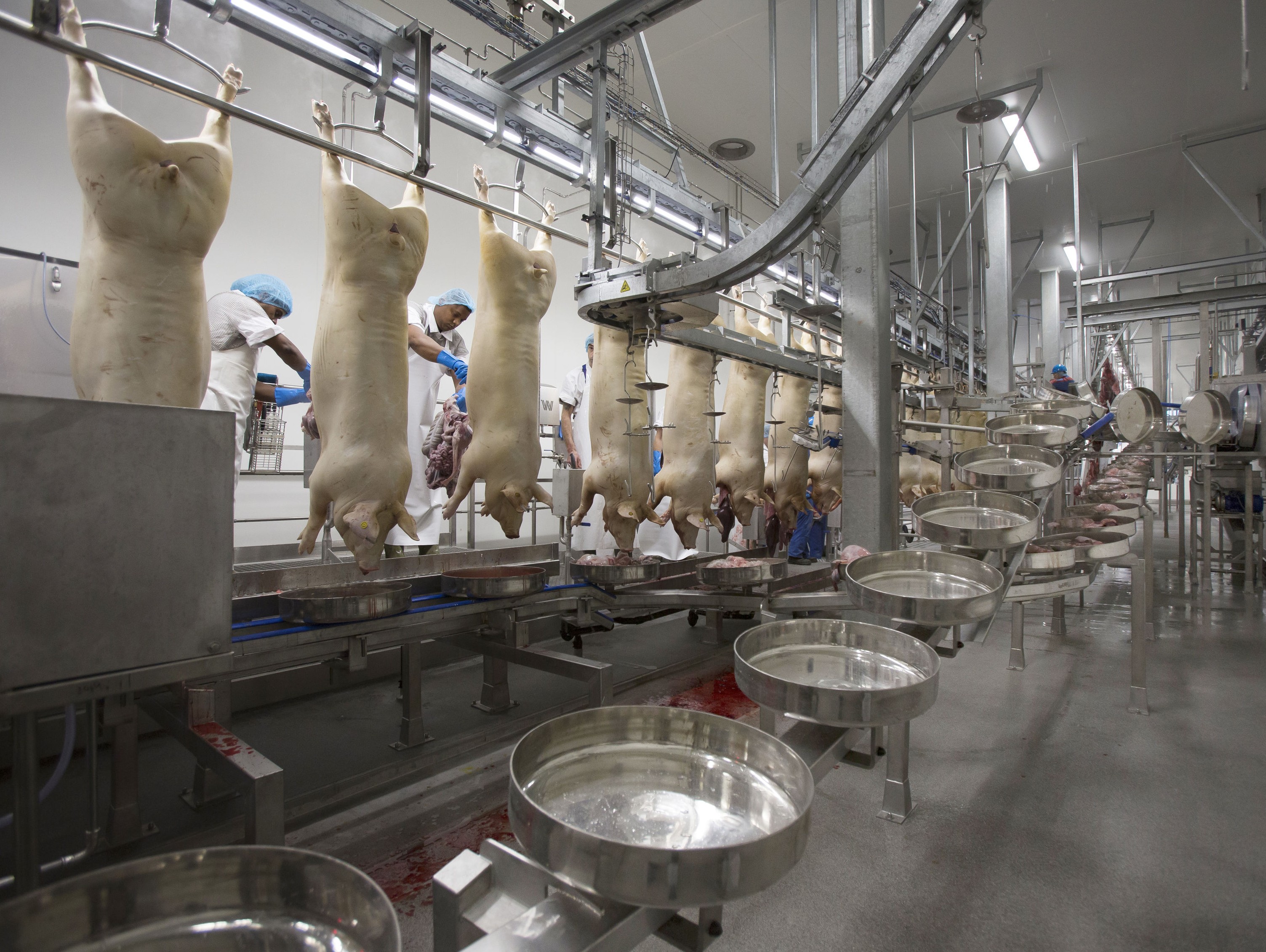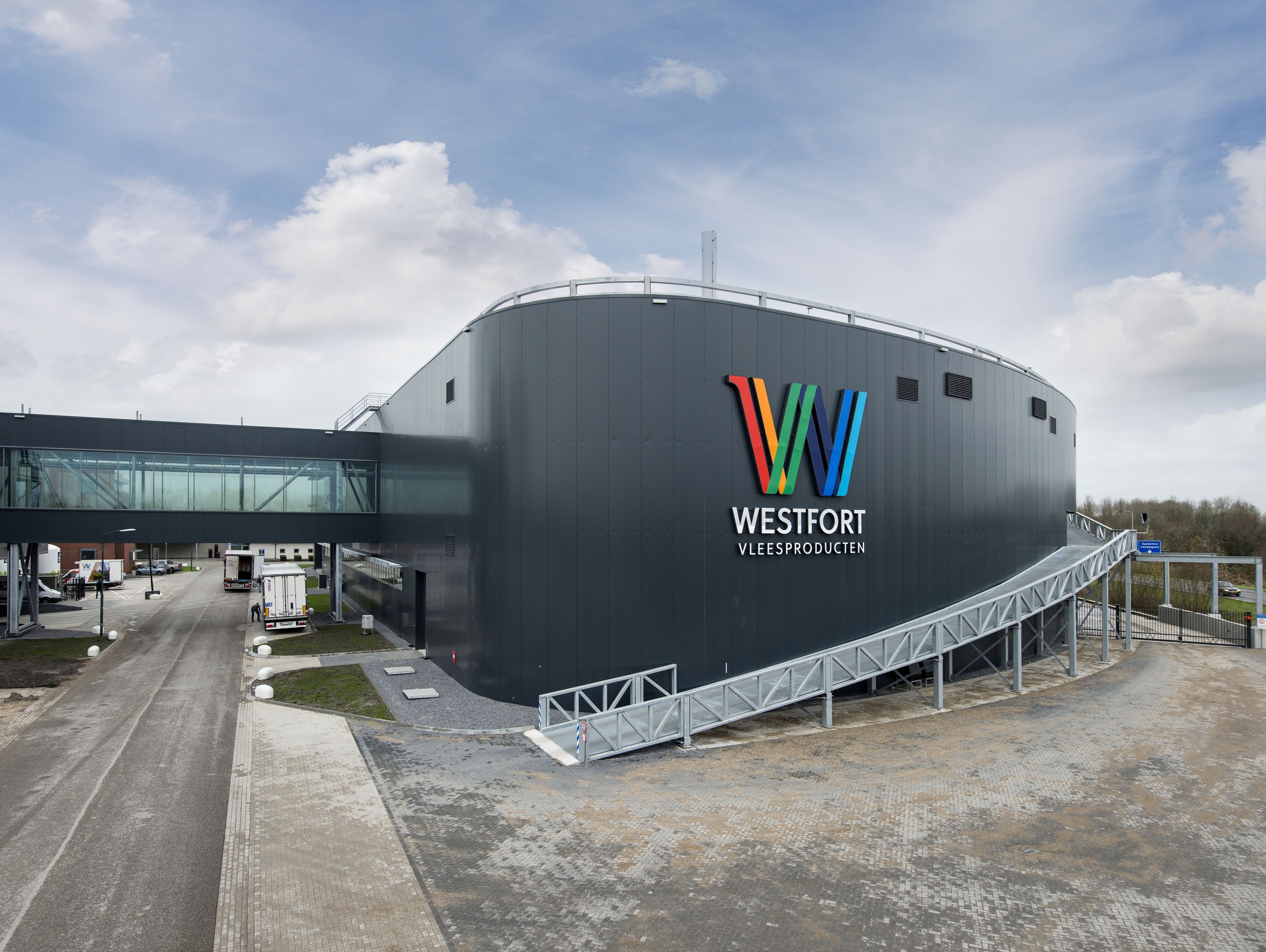
Westfort is the combination of two family-run companies, both with a long history in pork: Egbert Kruiswijk Vleesproducten B.V. and Lunenburg Vlees B.V. They decided to join forces in 2013, and Westfort recently opened its new pork slaughterhouse in IJsselstein. Rob Lunenburg and Jaap de Wit Sr. showed us their ultramodern facilities and explained the state-of-the-art solutions.
“Over the years we have opened five new slaughterhouses, so we’ve built up a lot of experience,” says Rob Lunenburg. “The main innovations are in the routing and the processes, such as in the stress-free arrival of the pigs, the animal-friendly method of anaesthesia (which is unique and has been developed in collaboration with MPS) and the accelerated cooling of the meat. Advancements have also been implemented ‘behind the scenes’; in particular, our use of the fermentation unit to reclaim energy is unique in the sector.”
“Thanks to the innovative fermentation unit we have reduced our waste from 75 tons a day to just 5 tons,” adds Jaap de Wit proudly. “And because the unit is located on our own premises, this also considerably reduces the transport of waste products. We’ve decreased our transport activities from 3 trucks a day to just one a week!” Once Jaap starts explaining how the unit works and its possibilities, there’s no stopping him. He continues enthusiastically: “The sludge from the water purification process is carried to the fermentation unit. The methane gas produces in the fermentation process is burned in the thermal power plant. The fermentation unit generates an impressive 20% of the electricity we use and 80% of our thermal input. In addition it converts the waste flows into natural fertilisers.”
Westfort works with several different and distinct pork concepts. Each batch of pigs that arrives at the slaughterhouse is kept strictly separate. As soon as they are unloaded, the animals are immediately colour-coded and remain so throughout all stages of the production process – from arrival and anaesthesia to the deboning and packaging departments. “All our pigs are born and raised on Dutch farms. We know exactly where all of them have come from, which feed mix supplier each farmer works with and even which vet. So if there’s been a problem upstream in the chain, we can take immediate action.”
“Because we place high demands on animal welfare in northern Europe we went in search of a way of minimising the stress for the animals, from the moment they arrive and during their stay until the moment they are anaesthetised,” explains Rob Lunenburg. “As a result, we opted for four unloading areas, even though three would have been enough based on our capacity. The rest areas have heated flooring so that the animals don’t become cold and stiff. We also use a completely new anaesthesia method,” continues Rob Lunenburg. “It’s based on anaesthesia lifts. They each work independently so if there’s a technical problem with one of the lifts, the other three offer sufficient capacity for us to maintain the required slaughtering rhythm. The air in the lifts automatically drops to the optimal CO₂ concentration. Unlike with traditional systems, we can visually monitor this entire process.” The system has been developed in collaboration with MPS.

The next striking innovation is the new approach to routing, which cuts out unnecessary internal transport. “We also wanted to be able to chill the carcasses more quickly than before, and we’ve succeeded in finding a way. After spending approximately 6 hours in the quick chill unit, all the carcasses – apart from the core of the ham – are at the desired temperature. The organs immediately go from the clean slaughtering line to a quick chill unit which cools them to less than 3 degrees Celsius in around 3 hours so they are ready for packing. And the heads and trotters are ready for packing around 6 hours after slaughter. From a bacteriological perspective, the meat now enters the chiller on trays rather than in crates and it is packed into boxes directly from the trays, entailing fewer manual interventions. That saves time and also improves the quality.”

The products are then shipped to all four corners of the world, but the Netherlands is the most important sales market. “We supply to all conceivable chains,” comments Rob, “from food manufacturers to wholesalers, butchers and grocery retailers. We offer them a range of concepts: Keten Duurzaam Varkensvlees (‘Sustainable Pork Value Chain’), Friberne from Friesland, organic St. Hendrick pork, IJsseland Vleeswaren, Het Varken van Morgen (sustainably produced ‘The Pig of Tomorrow’) and Beter Leven (‘Better Life’) 1-star pork. But we are also happy to work closely with customers to devise new and distinguishing bespoke products. We offer meat with a story behind it, plus we help our customers to get that story across effectively – such as through promotional materials for store displays, access to professional photos and sample text, and our own store coach who can give retailers in-store support.”
Source: © Westfort